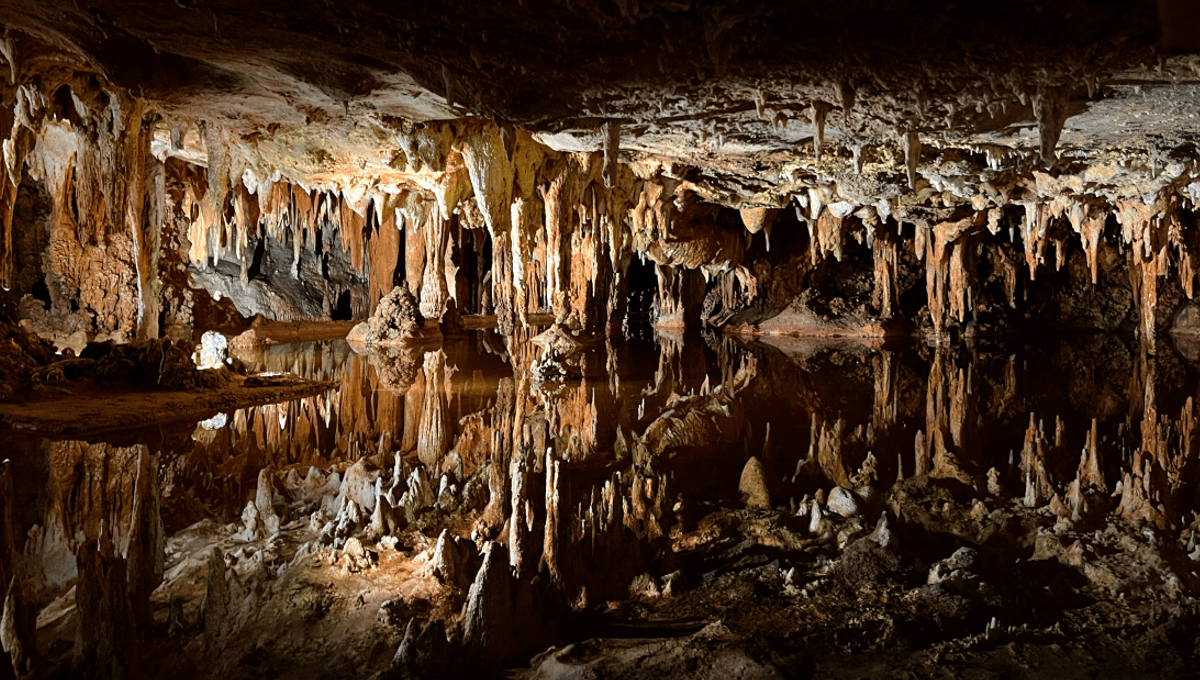
Did you know that organisms that live exclusively in caves are known as troglobites? It’s not the most appealing name in the world, but it seems fitting. Brings to mind images of wet, cold, and dark places where unknown liquids drip from the ceiling (some of which has been discovered to be the oldest water on Earth – and people drank it!).
Doesn’t sound great as a human that fears fungal illness, but one of the perks of cave conditions is that they promote the growth of enormous structures that can date back millions of years. Yes, I am talking about stalagmites.
Stalagmite vs. stalactite
A stalagmite is a cave feature that grows as a result of drips falling on the cave floor, so it grows from the ground up. A stalactite, on the other hand, develops in the opposite direction, hanging down from the ceiling sort of like an icicle. In short, if you could play hoopla with it, it’s a stalagmite, and if you’re worried about it falling on your head and skewering you Final Destination-style, it’s a stalactite.
They are both forms of speleothems, the name given to structures that form in caves through the deposition of minerals. They form as water leaks down from the ground above, scooping up minerals as it moves through the rock, and when it drips into underground caves, those minerals can solidify, building enormous, towering structures (or perfectly spherical balls – ever seen cave pearls?).
How old can stalagmites be?
Stalagmites grow extremely slowly. We’re talking thousands of years for just a few centimeters of growth. So, as you can imagine, by the time they’ve gotten significantly big, they’re also often very, very old.
The fossil cave system in Richards Spur, Oklahoma, is believed to be home to some of the oldest stalagmites in the world. Made up of limestone, it has yielded some of the world’s most diverse and well-preserved fossils from the Paleozoic, as it was at one time filled with petroleum and tar that protected the fossils from decay.
As such, it has many “oldest” claims to boast about, including the world’s oldest amniote skin, and – you guessed it – the oldest stalagmite on record. A 2010 study showed the potential of stalagmites as climate records from deep time as it radiometrically dated a stalagmite, revealing it was 289 million years old. That makes it, to borrow the authors’ words, “by far the oldest speleothem to be directly dated by radiometric means.”
The dating was done on fragments found in rock rather than standing speleothems, so if it’s the oldest intact stalagmites you’d like to see, you can’t go wrong with Lehman Caves in Nevada. As the longest cave system in the state, it’s home to stalagmites dating back 2.2 million years.
Though broken, the Richards Spur stalagmite is significant as it proves that these speleothems can endure for remarkable periods of time despite being relatively fragile. What’s more, it gives us a new source for information when trying to better understand ancient ecosystems, like that of the diverse fossils that have been found in Richards Spur.
“The samples we have started to study here will allow us to re-examine the terrestrial vertebrate fauna at Richards Spur within the context of the first absolute age and direct paleoclimate data for the Early Permian, one of the most significant chapters of vertebrate history,” said the authors. “Because this age is significantly older than traditional stratigraphic correlations would suggest, it may be necessary to reconsider currently accepted biostratigraphic ages for most Early Permian fossil sites in Pangea.”
“Our current views on the timing and tempo of early reptilian and synapsid diversification are likely to change significantly as we tie together for the first time precise age and climate determinations with the initial stages of higher vertebrate evolution on land.”
Not bad for what is, essentially, a solid puddle.
Source Link: The Oldest Stalagmite Ever Dated Was Found In Oklahoma Rocks, Dating Back 289 Million Years